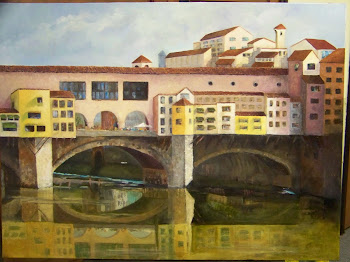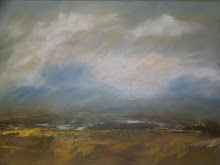And then there are those moments of failure ......thank goodness patience is a virtue!
My never-ending search for the Este ancestor who left Northern Italy’s Lake Como Region is and will continue to keep me very busy and probably frustrated. If my Grandfather hadn’t told a reporter that his “Mother’s family came from the Lake Como region in Northern Italy”, I’d still be searching the records in Scotland! Now, it looks like I have possibly discovered a link to the Estes family of the Veneto region, to Ferrara to be exact. As thrilled as I am to discover the link, I must admit having the family described as “infamous” has been rather disturbing. There is a moated fortress that was built by the Estes in Ferrara, and it is said they ruled with a “heavy hand”.
The Este Family ruled Ferrara and Modena in Northern Italy from the 13th century to the end of the 16th. During those many years, they played an important role in the political and cultural life of Italy, founding the University of Ferrara and making their courts major centers of literature and the arts. One of the leading members of the family was Isabella d'Este
The dynasty was established when Obizzo II (love that name! Should have named my son Obizzo instead of Chuck!) became perpetual lord of Ferrara in 1264, isn’t that cool! Perpetual lord! Este power was considerably extended by Niccolò III d'Este (lord 1393–1441), and by Borso d'Este (lord 1450–71), who became Duke of Modena and Reggio in 1452 and Duke of Ferrara in 1471. And then, along came Ercole I d'Este (Duke 1471–1505), who married into the royal family of Naples, definitely cinching the deal!
What does all of this power mean?
I think it means I am the Queen of Italy!
This is all great news, but it doesn’t answer that big question….who the hell was the one who left Ferrara and why did he go to Lake Como? And then, why did he leave Como and head for Scotland? Why would anyone leave Lake Como? I suppose I should be thankful because he left Scotland and came to America! It is all so convoluted. While I work on this mystery maybe you should try a traditional recipe from Northern Italy. In my opinion, this is the best food on the face of the earth, hope you enjoy it!
Osso Buco with Citrus Gremolata

8 meaty veal shanks, cut 1 1/2 inches thick (7 pounds)
Kosher salt and freshly ground pepper
6 tablespoons extra-virgin olive oil
6 carrots, cut into 1/4-inch dice
6 celery ribs, cut into 1/4-inch dice
2 onions, cut into 1/4-inch dice
6 garlic cloves-4 whole, 2 minced
3 bay leaves
4 cups chicken stock or low-sodium broth
2 cups dry white wine
1 15-ounce can diced Italian tomatoes
6 thyme sprigs
2 2 1/2-inch strips orange zest, minced
2 2 1/2-inch strips lemon zest, minced
2 tablespoons minced flat-leaf parsley
Preheat the oven to 375°. Season the veal shanks with salt and pepper. In a very large, deep skillet, heat 3 tablespoons of the olive oil until shimmering. Working in batches, cook the veal over moderately high heat until browned on both sides, about 8 minutes total per batch. Transfer the osso buco to a large roasting pan.
Add the remaining 3 tablespoons of olive oil to the skillet. Add the diced carrots, celery, onions, 4 whole garlic cloves and the bay leaves and cook over moderate heat until they are softened, about 12 minutes. Add the chicken stock, white wine, diced tomatoes and thyme sprigs and bring to a boil. Pour the vegetables and liquid over the veal, cover the roasting pan with foil and transfer to the oven. Braise the shanks for about 2 1/2 hours, until very tender.
Meanwhile, in a small bowl, mix the orange zest, lemon zest, parsley and the 2 minced garlic cloves. Lightly season the gremolata with salt and pepper.
Transfer the veal shanks to a baking sheet and cover with foil. Carefully strain the cooking liquid into a large bowl. Reserve the vegetables; discard the bay leaves and thyme sprigs. Pour the cooking liquid back into the roasting pan and boil over high heat until it is reduced by half, about 25 minutes. Season the sauce with salt and pepper. Stir in the reserved vegetables and simmer over moderately low heat for 2 minutes. Transfer the osso buco to shallow bowls. Spoon the sauce and vegetables on top and sprinkle lightly with the gremolata. Serve with the remaining gremolata at the table.
Serve with……
Soft Polenta
1 1/2 cups chicken stock
1 1/2 cups heavy cream

1/2 teaspoon freshly grated nutmeg
3/4 teaspoon salt
1 Pinch ground white pepper
5 tablespoons polenta
5 tablespoons semolina
1/4 cup freshly grated Fontina or Telme
1/4 cup freshly grated Parmesan, plus extra for dusting
In a heavy saucepan, combine the stock and cream, and bring to a boil. Add the nutmeg and salt. Whisk in the polenta and semolina and cook over low heat for about 20 to 30 minutes, stirring often, until the grains are soft. Fold in the cheeses. Serve immediately or reserve.
To encourage polenta to come cleanly out of the pan, cook over medium heat. Run a spatula or wooden spoon around the sides of the pan to clean off the polenta. Do not stir, but wait and watch for a few seconds until a large bubble begins to form and pushes the polenta upward. Pour immediately into a warm dish.
The polenta can be made ahead and reheated: add 1/4 to 1/2 cup water or stock, cover the dish, and reheat in the microwave or over low heat. Whisk well before serving. Grate a dusting of Parmesan over the top just before serving
.
 So Sad! I will be unable to celebrate
So Sad! I will be unable to celebrate 









